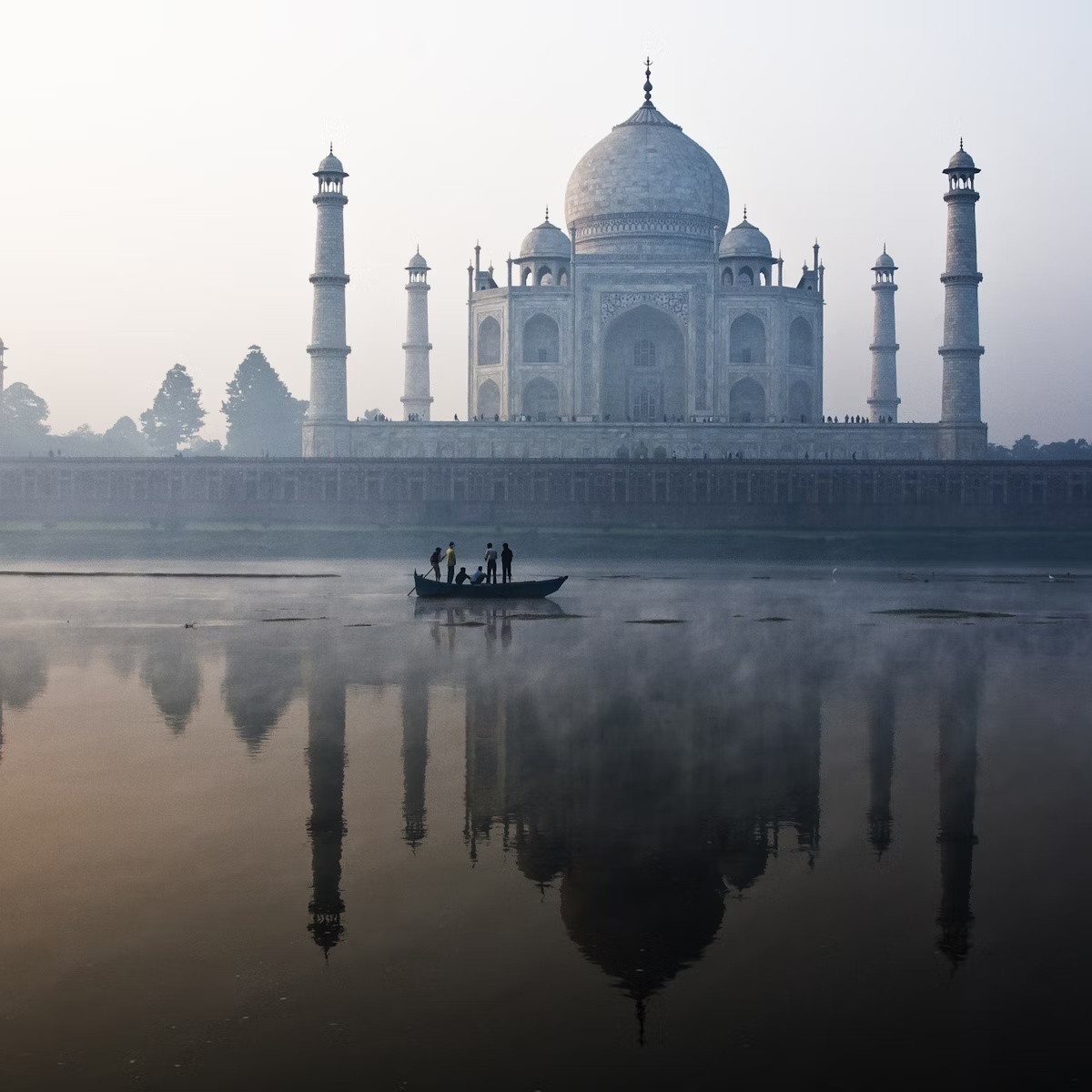The main sight at Fatehpur Sikri is the stunning imperial complex of pavilions and palaces spread amid a large, abandoned 'city' peppered with Mughal masterpieces: courtyards, intricate carvings, servants quarters, vast gateways and ornamental pools. Budget half a day here.
A large courtyard dominates the northeast entrance at Diwan-i-Am (Hall of Public Audiences). Now a pristinely manicured garden, this is where Akbar presided over the courts – from the middle seat of the five equal seatings along the western wall, flanked by his advisors. It was built to utilise an echo sound system, so Akbar could hear anything at any time from anywhere in the open space. Justice was dealt with swiftly if legends are to be believed, with public executions said to have been carried out here by elephants trampling convicted criminals to death.
The Diwan-i-Khas (Hall of Private Audiences), found at the northern end of the Pachisi Courtyard, looks nothing special from the outside, but the interior is dominated by a magnificently carved stone central column. This pillar flares to create a futuristic flat-topped plinth linked to the four corners of the room by narrow stone bridges. From this plinth Akbar is believed to have debated with scholars and ministers who stood at the ends of the four bridges.
Next to Diwan-i-Khas is the U-shaped Treasury, which houses secret stone safes in some corners (several have been left with their stone lids open for visitors to see). Elephant-headed sea monsters carved on the ceiling struts were there to protect the fabulous wealth once stored here. The so-called Astrologer’s Kiosk to the left has roof supports carved in a serpentine Jain style.
Just south of the Astrologer's Kiosk is Pachisi Courtyard, named after the ancient game known in India today as ludo. The large, plus-shaped game board is visible surrounding the block in the middle of the courtyard. In the southeast corner is the most intricately carved structure in the whole complex, the tiny but elegant Rumi Sultana, which was said to be the palace built for Akbar’s Turkish Muslim wife. Other theories say it was used by Akbar himself as a rest break during court sessions. Look for the defaced carved birds, animals and flowers in several marble panels.
Just west of the Pachisi Courtyard is the impressive Panch Mahal, a pavilion with five storeys that decrease in size until the top consists of only a tiny kiosk. The lower floor has 84 different columns; in total there are 176 columns.
Continuing anticlockwise will bring you to the Ornamental Pool. Here, singers and musicians would perform on the platform above the water while Akbar watched from the pavilion in his private quarters just behind, known as Daulat Khana (Abode of Fortune). At the back of the pavilion is the Khwabgah (Dream House), a sleeping area with a huge elevated stone bed platform. A water pool below the bed would have acted as a cooler in summer.
Heading west through a doorway from the Ornamental Pool reveals the Palace of Jodh Bai, and the one-time home of Akbar’s Hindu wife, said to be his favourite. Set around an enormous courtyard, it blends traditional Indian columns, Islamic cupolas and turquoise-blue Persian roof tiles. Just outside, to the left of Jodh Bai’s former kitchen, is the Palace of the Christian Wife. This was used by Akbar’s Goan wife Mariam, who gave birth to Jehangir here in 1569. (Some believe Akbar never had a Christian wife and that Mariam was short for Mariam-Ut-Zamani, a title he gave to Jodh Bai meaning 'Beautiful like a Rose', or 'Most Beautiful Woman on Earth'.) Like many of the buildings in the palace complex, it contains elements of different religions, as befitted Akbar’s tolerant religious beliefs. The domed ceiling is Islamic in style, while remnants of a wall painting of the Hindu god Shiva can also be found.
Continuing left (west) past the Maryam Garden (with a toilet) will take you west to Birbal Bhavan, ornately carved inside and out, and thought to have been the living quarters of one of Akbar’s most senior ministers. The Lower Haramsara, just to the south, housed Akbar's large number of live-in female servants, though some claim it was a stables and that the circular stone loops were use to tether camels and horses.





